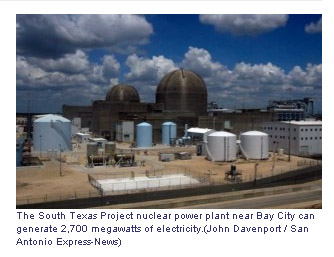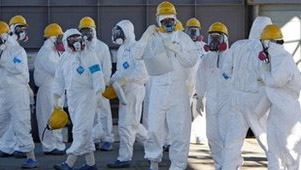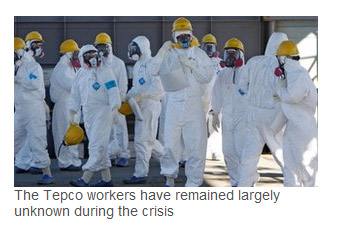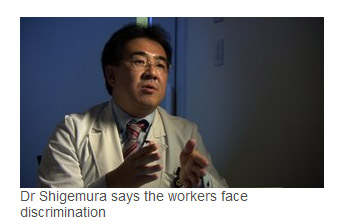Archive for the ‘News’ Category
China suspends all new nuclear plants, orders safety review
Wednesday, March 16, 2011
By Keith B. Richburg and
Washington Post researcher Wang Juan in
Shanghai contributed to this report
Washington Post
BEIJING — In a dramatic reversal, China’s State Council, or cabinet, announced Wednesday that it was suspending approval for all new nuclear power plants until the government could issue revised safety rules, in light of the unfolding crisis at the Fukushima nuclear facility in Japan.
The State Council, chaired by Premier Wen Jiabao, also announced the government would conduct safety checks at the country’s existing nuclear facilities and those under construction, according to a brief statement issued after the meeting and reported by the state-run Xinhua News Agency.
"We will temporarily suspend approval of nuclear power projects, including those in the preliminary stages of development," the statement said.
With 13 nuclear reactors in operation, at least 26 others under construction, and more in the planning stage, China has by far the world’s most ambitious nuclear power program. But that program has attracted little or no public debate or scrutiny in this authoritarian country where decisions are handed down by the ruling elite and most traditional media is tightly controlled.
Last week, when the crisis in Japan first began, Zhang Lijun, China’s vice minister for environmental protection, told reporters that there would be no change in China’s nuclear plans. "Some lessons we learn from Japan will be considered in the making of China’s nuclear power plans," he said. "But China will not change its determination and plan for developing nuclear power."
But the disaster at Fukushima across the East China Sea has riveted the Chinese public, prompting a debate for the first time over the country’s growing reliance on nuclear power for its energy needs and causing panic on China’s southeastern coast, closest to Japan.
In Shanghai, residents were stocking up on iodine pills and face masks, fearing that the radioactive steam cloud above the Fukushima plant may drift across the sea toward China.
At Shanghai’s Lei Yun Shang pharmacy, a worker said the store sold out its entire stock of 300 boxes of iodine Tuesday — more than is sold in a typical month — and then another 600 boxes Wednesday. The worker said the pharmacy also sold about 1,000 face masks, its entire supply.
Chinese authorities began radiation checks of people, luggage and goods arriving at airports and seaports from Japan. In Heilongjiang province in northeast China, environmental officials began taking air samples and conducting around-the-clock monitoring for radiation.
So far, no abnormal levels of radiation have been detected.
A group of Chinese nuclear scientists and other experts publicly called on the government to quickly pass the country’s first atomic energy law to regulate more clearly the growing nuclear industry here, including safety supervision at nuclear power stations.
Also Wednesday, the Global Times newspaper, whose editorials often reflect the thinking of its owner, the ruling Communist Party, called for more public debate over China’s nuclear expansion.
"China has seen little debate over nuclear power safety as compared with other countries," the Global Times’ lead editorial said. "It is questionable whether China will stick to a proper pace of nuclear power development, and maintain strictest safety standards in selecting its construction sites."
It added, "It always takes more time when the public joins in debates and supervision. However, such costs are certainly worthwhile when we consider the importance of nuclear power."
richburgk(at)washpost.com
Washington Post researcher Wang Juan in Shanghai contributed to this report.
This document contains copyrighted material whose use has not been specifically authorized by the copyright owner. SEED Coalition is making this article available in our efforts to advance understanding of ecological sustainability, human rights, economic democracy and social justice issues. We believe that this constitutes a "fair use" of the copyrighted material as provided for in section 107 of the US Copyright Law. If you wish to use this copyrighted material for purposes of your own that go beyond "fair use", you must obtain permission from the copyright owner.
South Texas Project Event Report – January 2013
THERE WAS A FIRE AT THE STP NUCLEAR REACTOR SITE JUST THIS WEEK:
| Power Reactor | Event Number: 48659 | |||||
| Facility: SOUTH TEXAS Region: 4 State: TX Unit: [ ] [2] [ ] RX Type: [1] W-4-LP,[2] W-4-LP NRC Notified By: ERIC MAXWELL HQ OPS Officer: DONALD NORWOOD Notification Date: 01/08/2013 |
Notification Time: 18:15 [ET] Event Date: 01/08/2013 Event Time: 16:40 [CST] Last Update Date: 01/08/2013 |
|||||
| Emergency Class: UNUSUAL EVENT 10 CFR Section: 50.72(a) (1) (i) – EMERGENCY DECLARED 50.72(b)(2)(iv)(B) – RPS ACTUATION – CRITICAL 50.72(b)(3)(iv)(A) – VALID SPECIF SYS ACTUATION |
Person (Organization): VINCENT GADDY (R4DO) ERIC LEEDS (NRR) STEVE REYNOLDS (R4) WILLIAM GOTT (IRD) PATRICK HILAND (NRR) |
| Unit | SCRAM Code | RX CRIT | Initial PWR | Initial RX Mode | Current PWR | Current RX Mode |
| 2 | A/R | Y | 100 | Power Operation | 0 | Hot Standby |
Event Text
|
UNUSUAL EVENT DECLARED DUE TO MAIN TRANSFORMER FIRE "Fire in Unit 2 main transformer 2A. Reactor trip. Two train of offsite power lost to Unit 2." "An Unusual Event was declared based on EAL HU-2 – Fire or explosion in protected area or switchyard which affects normal plant operations." At 1655 CST, South Texas Unit 2 declared an Unusual Event due to a main transformer fire. Unit 2 tripped from 100% power and is currently at 0% power in Mode 3. The transformer fire is out. In addition to the loss of the main transformer, several safety related electrical busses and non-safety electrical busses lost offsite power. The appropriate emergency diesel generators started and powered the safety related busses. Unit 2 is currently stable and on natural circulation due to the loss of power to the reactor coolant pumps. Auxiliary feedwater is functioning as required and decay heat is being removed through the steam generator atmospheric relief valves. Unit 1 was unaffected by the event. The licensee notified the NRC Resident Inspector. Notified DHS SWO, FEMA, DHS NICC and NuclearSSA via email. * * * UPDATE FROM RICK NANCE TO BILL HUFFMAN AT 2055 EST ON 1/8/2013 * * * "On January 8, 2013, at 1640 CST, a failure of the Unit 2 Main Transformer occurred which resulted in a Unit 2 automatic trip. The failure of the main transformer resulted in a fire and damage to the transformer. The onsite fire brigade responded to the fire. The fire was declared under control at 1649 CST and declared out at 1656 CST. No offsite assistance was required. "An Unusual Event was declared at 1655 CST for initiating condition HU-2 (Fire or explosion in protected area or switchyard which affects normal plant operations) due to the main transformer fire. "Due to the site electrical lineup at the time, the loss of the main transformer resulted in a loss of power to 4160 ESF buses 2A and 2C, and associated Standby Diesel Generators 21 and 23 started as required and loaded on to their respective buses. 4160 ESF bus 2B remained energized from offsite power during this event and Standby Diesel Generator 22 did not start since an undervoltage condition did not exist on its ESF bus. "All three (3) motor-driven and the steam-driven Auxiliary Feedwater Pumps started as required. The Main Steam Isolation Valves were closed in accordance with procedure to limit plant cooldown. Decay heat is being removed via Auxiliary Feedwater with Steam Generator Power Operated Relief Valves. "Following the reactor trip, Pressurizer Power Operated Relief Valve 656A momentarily lifted and re-closed. "There were no personnel injuries and no radiological release as a result of this event. A press release has been issued. "The plant is currently stable in Mode 3 and the cause of the event is under investigation. "The Unusual Event was terminated at 1947 CST on 1/8/2013." The licensee notified the NRC Resident Inspector. Notified R4DO (Gaddy), NRR (Leeds), R4 (Reynolds), IRD (Gott), NRR EO (Hiland). Notified DHS SWO, FEMA, USDA, HHS, DOE, DHS NICC, EPA, and NuclearSSA via email. |
Fire at South Texas Project Nuclear Reactor Site – Just Before Re-licensing Hearing
Media Release:
January 11, 2013
Contact:
Karen Hadden, Sustainable Energy & Economic Development (SEED) Coalition, 512-797-8481
Susan Dancer, South Texas Association for Responsible Energy, 361-588-2143
Download this release in pdf format for printing.
Austin, TX A fire that shot 50 foot flames into the air erupted January 8th in the main transformer at the South Texas Project site near Bay City, Texas, about 90 miles southwest of Houston. Reactor 2, which was out of commission for five winter months in 2011-2012, has not been operating since the fire.
The fire occurred just one week prior to a hearing on re-licensing the two South Texas Project reactors, which will be held January 15th from 2-5 pm and 7-10 pm at the Bay City Civic Center, 201 Seventh St.
“Nuclear reactor fires and explosions create serious safety risks, and are of great concern to those of us who live close by. While the South Texas Project fire was burning I found myself trying to decide which of our rescue ranch horses we could take if my family had to evacuate due to radioactive releases, and which we would have to leave behind,” said Susan Dancer, who lives 8 miles from the reactors.
“The two South Texas nuclear reactors have been here for decades but Matagorda County still has no full-time, paid fire department. Who knows how long it would take for Houston teams to arrive if needed. Meantime, plant managers have been busy cutting personnel in hopes of higher profits, instead of putting safety first.” The STP reactors are owned by NRG, Austin Energy and San Antonio’s CPS Energy.
“Any nuclear reactor is at risk from fires, explosions, hurricanes, tornadoes, floods, earthquakes, lack of cooling water and terrorist attacks, as well as accidents due to human error and mechanical failure,” said Karen Hadden, Director of the Sustainable Energy and Economic Development (SEED) Coalition.
“This is like a used car deal – made fourteen years in advance. Why not wait until 2025 to see what shape the reactors are in before even considering re-licensing? The reactors, now 24 and 25 years old, are licensed to run 40 years – until 2027 and 2028. It’s time to plan for their replacement, not court disaster by giving aging reactors twenty additional years.”
The NRC Event report and hearing information are online at www.NukeFreeTexas.org.
###
Brief fire prompts shutdown of reactor at Bay City nuke plant
January 8, 2013
By Nolan Hicks
FuelFix Blog Houston Chronicle

A fire at the South Texas Project Electric Generating Station, the nuclear power plant about 90 miles southwest of Houston, shut down one of the plant’s two reactors Tuesday afternoon.
The fire broke out at 4:42 p.m. at the main transformer that feeds power from the reactor to the public power grid, and the reactor was shut down immediately, plant spokesman Buddy Eller said.
The fire was extinguished within 15 minutes, Eller said. He did not know when the reactor might be restarted.
Eller said the fire never threatened the reactor or other key components of the plant, no workers were hurt and the public was never endangered.
The South Texas Project is owned jointly by NRG Energy, Austin Energy and San Antonio’s municipal utility, CPS Energy.
This document contains copyrighted material whose use has not been specifically authorized by the copyright owner. SEED Coalition is making this article available in our efforts to advance understanding of ecological sustainability, human rights, economic democracy and social justice issues. We believe that this constitutes a "fair use" of the copyrighted material as provided for in section 107 of the US Copyright Law. If you wish to use this copyrighted material for purposes of your own that go beyond "fair use", you must obtain permission from the copyright owner.
Why Japan’s ‘Fukushima 50’ remain unknown
3 January 2013
By Rupert Wingfield-Hayes
BBC News, Tatsuno, Japan

The BBC’s Rupert Wingfield-Hayes has been to the radiation zone to meet one of the workers who stayed at the plant Japan quake
Entering the exclusion zone around the crippled Fukushima nuclear power plant is an unnerving experience.
It is, strictly speaking, also illegal. It is an old cliché to say that radiation is invisible. But without a Geiger counter, it would be easy to forget that this is now one of the most contaminated places on Earth.
The small village of Tatsuno lies in a valley 15km (9.3 miles) from the plant. In the sunlight, the trees on the hillsides are a riot of yellow and gold. But then I realise the fields were once neat rice paddies. Now the grass and weeds tower over me.
On the village main street, the silence is deafening – not a person, car, bike or dog. At one house, washing still flaps in the breeze. And all around me, invisible, in the soil, on the trees, the radiation lingers.
But on top of a hill behind the village is a farm – and here there is noise. Two long metal sheds are crowded with cows, nearly 400 of them. Sitting next to a wood stove sipping a cup of coffee is 58-year-old Masami Yoshizawa.
 He shouldn’t be here. Nor should his cows. He should be gone and they should be dead. But Mr Yoshizawa is refusing to leave or slaughter his cows.
He shouldn’t be here. Nor should his cows. He should be gone and they should be dead. But Mr Yoshizawa is refusing to leave or slaughter his cows.
"I will never be able to grow rice again on this land," he says. "No vegetables, no fruit. We can’t even eat the mushrooms that grow in the woods; they are too contaminated. But I will not kill my cows. They are a symbol of the nuclear disaster that happened here."
From Mr Yoshizawa’s front porch, you can clearly see the tall white chimneys of the nuclear plant. Standing here, it’s easy to understand the anger and hatred people like him feel towards the Tokyo Electric Power Corporation (Tepco).
A Japanese parliamentary report published in July makes it clear that the Fukushima reactor meltdowns were not the unavoidable result of an extraordinary natural disaster. They were a man-made catastrophe, the report says.
But it is also clear the disaster would have been much worse were it not for the actions of hundreds of employees of the same Tepco.
‘Responsible’
In the immediate aftermath of the disaster, the foreign media, including the BBC, hailed the men as the "Fukushima 50".
 The Tepco workers have remained largely unknown during the crisisIn fact there were never 50 of them. Hundreds of workers stayed at the plant, braving high levels of radiation to bring the reactors under control. Many are still there today.
The Tepco workers have remained largely unknown during the crisisIn fact there were never 50 of them. Hundreds of workers stayed at the plant, braving high levels of radiation to bring the reactors under control. Many are still there today.
And yet almost nothing has been heard from them. No awards, no newspaper articles or TV interviews. We don’t even know their names.
It took us weeks to track one man down and persuade him to talk to us. Even then, he insisted we could not photograph him or use his name.
We meet on a rainy day at a Tokyo park, far away from any crowds. The young man describes how he and a group of other nuclear workers were sent back in to the plant after the first reactor explosion.
"The person who sent us back didn’t give us any explanation," he says. "It felt like we were being sent on a death mission."
I put it to him that what he and his colleagues did was heroic, that they should feel proud. He shakes his head, a slightly anguished look on his face.

"Even when I’m out with friends, it’s impossible to feel happy. When people talk about Fukushima, I feel that I am responsible."
‘Mulitiple stresses’
For an outsider, such a reaction is quite hard to fathom. For help, I turn to psychiatrist Dr Jun Shigemura at Japan’s national defense university. He is one of two doctors who have studied the Fukushima workers.
His research suggests that half of those who fought the reactor meltdowns are suffering from depression and post-traumatic stress symptoms.
"The workers have been through multiple stresses," Dr Shigemura says.
"They experienced the plant explosions, the tsunami and perhaps radiation exposure. They are also victims of the disaster because they live in the area and have lost homes and family members. And the last thing is the discrimination."
Yes, discrimination. Not only are the workers not being celebrated, they are facing active hostility from some members of the public.
"The workers have tried to rent apartments," says Dr Shigemura. "But landlords turn them down, some have had plastic bottles thrown at them, some have had papers pinned on their apartment door saying ‘Get out Tepco’."
‘Not heroes’
Back in the 1960s and 70s, getting rural Japanese communities to accept nuclear power plants was hard.
 Dr Shigemura says the workers face discriminationThey were promised new roads and sports facilities. They were promised high paying jobs in the plant. And most of all, they were promised that nuclear power was completely safe.
Dr Shigemura says the workers face discriminationThey were promised new roads and sports facilities. They were promised high paying jobs in the plant. And most of all, they were promised that nuclear power was completely safe.
Now that the lie has been so tragically exposed, the feeling of betrayal is huge.
Before the meltdowns, Seiko Takahashi never thought of activism. Now the middle-aged mother from Fukushima City is a passionate anti-nuclear campaigner. And she admits there is little sympathy for the Fukushima workers.
"They are not heroes for us," she says. "I feel sorry for them, but I don’t see them as heroes. We see them as one block, they work for Tepco, they earned high salaries. The company made a lot of money from nuclear power, and that’s what paid for their nice lives."
And that is the final point. Japan is a country where people identify very closely with the company they work for. People here will often introduce themselves with their company name first, and their own only second.
But those close ties between the Fukushima nuclear workers and Tepco are exacting a terrible psychological toll on the men who saved Japan from a much worse nuclear disaster.
This document contains copyrighted material whose use has not been specifically authorized by the copyright owner. SEED Coalition is making this article available in our efforts to advance understanding of ecological sustainability, human rights, economic democracy and social justice issues. We believe that this constitutes a "fair use" of the copyrighted material as provided for in section 107 of the US Copyright Law. If you wish to use this copyrighted material for purposes of your own that go beyond "fair use", you must obtain permission from the copyright owner.


